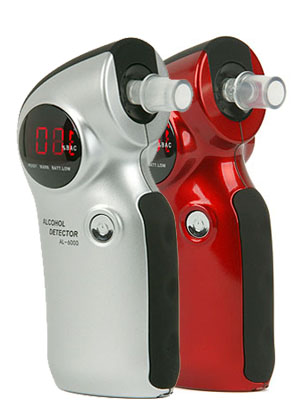Facts about DUI/DWI Laws
 In
the US, BAC Levels for DUI/DWI Laws are determined by individual states.
The limit of .10 BAC used in some states is the highest in the industrial
world. 1 In
the US, BAC Levels for DUI/DWI Laws are determined by individual states.
The limit of .10 BAC used in some states is the highest in the industrial
world. 1
A 1999 report by the General Accounting
Office (GAO) stated that although the impact of .08 BAC laws is
not conclusive, there are “strong indications that .08 BAC
laws, in combination with other drunk driving laws (particularly
license revocation laws), sustained public education and information
efforts, and vigorous and consistent enforcement, can save lives.”2
A multi-state study found that .08 BAC laws correlated
positively with reductions in alcohol-related fatalities, alone
or in conjunction with Administrative License Revocation (ALR) laws,
in seven of 11 states. In five of these seven states (Vermont, Kansas,
North Carolina, Florida and New Mexico), implementation of the law
itself correlated positively with lower rates of alcohol-related
fatalities. 3
In 1998, more than 80 percent of drivers involved
in fatal crashes who tested positive for alcohol had BAC levels
exceeding .08. 4
Research indicates that .08 BAC laws reduce not
only the incidence of impaired driving at lower BACs, but also the
incidence of impaired driving at higher BACs (i.e., more than .10).
5
AlcoMate Prestige is an ideal device
for Maritime.
it needs no calibration and the sensor can be swapped
by staff on board of a vessel. This provide readiness
and accuracy demanded by the US Coast Guard
Click
on the image to view more information
An average male weighing 170 pounds would have
to consume more than four beers within one hour on an empty stomach
to reach a .08 BAC level. 6
Virtually all drivers’ critical driving skills,
such as braking, steering and lane changing, are impaired at .08
BAC. The rate of impaired performance is as high as 70 percent.
7
Federal law requires that states have laws that
target repeat intoxicated drivers. Four categories of laws impact
these individuals: licensing sanctions (ALR laws); vehicle sanctions
(vehicle impoundment); required alcohol assessment and treatment;
and mandatory sentencing. 8
ALR laws do not replace criminal prosecution and
their constitutionality has been consistently upheld when challenged.
All state appellate courts that have considered this issue have
upheld ALR as a constitutional means of protecting the public from
impaired drivers. 9
Results of a 1996 study indicate that ALR laws
do not significantly impact an offender’s job or income. The
study compared three ALR laws states with one state that used other
sanctions and found no difference regarding offender employment
or income. In both ALR and non-ALR laws states, 94 percent of offenders
who were employed at the time of their arrest were still working
one month later. Four percent were unemployed and two percent were
in school. License revocations as long as 90 days did not lead to
loss of job or income. 10
All states and the District of Columbia have a
minimum drinking age of 21. The National Highway Transportation
Safety Administration (NHTSA) estimates that these laws have reduced
traffic fatalities involving drivers ages 18-20 by 13 percent and
have saved as many as 23,043 lives since 1975. In 2000, the number
of estimated lives saved by minimum drinking age laws was 922. 11
Zero Tolerance Program
In June 1995, in a weekly radio address, President
Clinton called on Congress to make “zero tolerance”
the law of the land, prohibiting persons under the age of 21 from
driving with any measurable alcohol in their system. Congress acted
in November 1995, and established the Federal Zero Tolerance program,
requiring the withholding of certain Federal-aid highway funds from
states that do not enact and enforce “zero tolerance”
laws.
To avoid the withholding of funds, states must enact and enforce
zero tolerance laws by October 1, 1998, that: set .02 percent BAC
as the legal level for all persons under the age of 21; make .02
a per se offense (without having to prove intoxication); provide
for primary enforcement; and authorize license suspensions or revocations
for any violation of the state zero tolerance law.
At the time of the President’s June 1995 radio address, 24
states and the District of Columbia had zero tolerance laws (although
three of these state laws did not fully conform with the Federal
zero tolerance requirements). Today, the remaining 26 states have
enacted zero tolerance laws.
Endnotes
1 National Highway Transportation Safety Administration.
(April 2001). Setting Limits, Saving Lives: The Case for.08 BAC
Laws. Washington, DC: US Department of Transportation.
2 Ibid
3.Ibid.
4 National Highway Transportation Safety Administration. (2001).
State Legislative Fact Sheet, .08 BAC Illegal Per Se Level. Washington,
DC: US Department of Transportation.
5 National Highway Transportation Safety Administration. (January
2001). State Legislative Fact Sheet, .08 BAC Illegal Per Se Level,
Point-Counterpoint. Washington, DC: US Department of Transportation.
6 Supra Note 4.
7 Insurance Institute for Highway Safety, Highway Loss Data Institute.
(2000). DUI/DWI Laws as of October 2000.
8 National Highway Transportation Safety Administration. (2001).
State Legislative Fact Sheets, Repeat Intoxicated Driver Laws. Washington,
DC: US Department of Transportation.
9 National Highway Transportation Safety Administration. (2001).
Administrative License Revocation (or Suspension), Key Facts. Washington,
DC: US Department of Transportation.
10 Ibid.
11 National Highway Transportation Safety Administration. (2001).
Traffic Safety Facts 2000, Alcohol. Washington, DC: US Department
of Transportation
|




